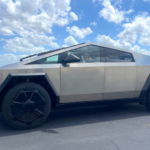
The James Webb Space Telescope continues to throw up surprises, and recently it has been used to spot some very old galaxies which have astonished astronomers. The galaxy candidates are far more massive than anyone expected would be possible, challenging assumptions about the early universe.
An international team of astronomers spotted six potential galaxies in a region of space close to the Big Dipper constellation from just 500 to 700 million years after the Big Bang, when the universe was still in its infancy. “These objects are way more massive than anyone expected,” said one of the researchers, Joel Leja of Penn State. “We expected only to find tiny, young, baby galaxies at this point in time, but we’ve discovered galaxies as mature as our own in what was previously understood to be the dawn of the universe.”

The galaxies appear to contain almost as many stars as our modern-day Milky Way but are much more compact. The researchers stress that they need more data to confirm whether these galaxies definitely are as old as they seem, but if so they could have a profound impact on the way we understand the early universe.
“It’s bananas,” said Erica Nelson of CU Boulder, another of the researchers. “You just don’t expect the early universe to be able to organize itself that quickly. These galaxies should not have had time to form.”
It’s possible that some of the objects could turn out to be supermassive black holes or quasars, but the researchers think they are more likely to be galaxies. “If even one of these galaxies is real, it will push against the limits of our understanding of cosmology,” Nelson said.
The issue is that current models of cosmology posit that early galaxies should be very small, only growing larger over a long period of time.
“We looked into the very early universe for the first time and had no idea what we were going to find,” Leja said. “It turns out we found something so unexpected it actually creates problems for science. It calls the whole picture of early galaxy formation into question.”
The research is published in the journal Nature.
Editors’ Recommendations



